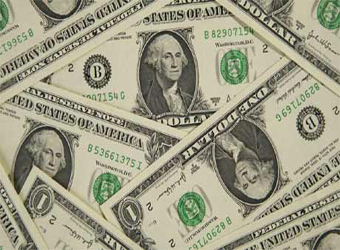U.S. dollar edged lower against the euro and eased off a one-month high against the yen on Monday after weak U.S. factory and inflation data did not boost expectations for a June interest rate hike from the Federal Reserve.
The personal consumption expenditures (PCE) price index excluding food and energy slipped 0.1 percent in March, the first and largest drop since September 2001.
In the 12 months through March, the so-called core PCE price index increased 1.6 percent, the smallest gain since last July.
That reading of the core PCE, which is the Fed’s preferred inflation measure, fell short of the central bank’s two percent target.In addition, the Institute for Supply Management (ISM) said its index of national factory activity dropped to a reading of 54.8 last month, the weakest reading since December.
“We’re sort of knee-deep in a soft patch of numbers,” said Richard Franulovich, senior currency strategist at Westpac Banking Corp in New York.
He also cited U.S. first-quarter gross domestic product growth data last week that showed the U.S. economy grew at its weakest pace in three years.
“If the numbers continue to come out on the weaker side of expectations for the next two or three months, then I would say yes, the Fed would be revising their expectations for the economy,” he said, but added that the Fed would likely label the weak U.S. economic data as “transitory” in the central bank’s Wednesday policy statement.
The euro was last up 0.08 percent against the dollar at $1.0904, after touching a session high of $1.0923 following the data. That session peak remained below last week’s 5-1/2-month high of $1.0950.
The dollar was last slightly higher against the yen at 111.83 yen but below a one-month high of 111.91 touched before the data.
The dollar’s weakness was minor since the data, while failing to bolster expectations of a June Fed rate hike, did little to convince investors that the Fed would forgo hiking rates in June.
Trading was thin, with several markets across Asia and Europe closed for the May Day holiday.
The data was enough, however, to lead the euro to extend its gains after jumping 2.3 percent against the greenback in April.
“You’ve got some numbers today that are promoting the same story that maybe growth isn’t there,” said Douglas Borthwick, managing director at Chapdelaine Foreign Exchange in New York.
Source: Reuters
